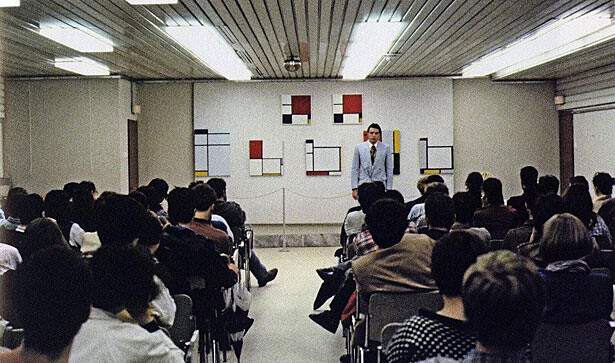When we try to resolve the problems of the present, we often look to the past. One chapter from the unfinished past is, without doubt, the project of communism. What can cultural revolution have in common with potential solutions to the current financial crisis? Today the world’s esteemed economists and sociologists assert that the key to solving the economic crisis lies not in some new mechanical device, but rather in the creativity of as many people as possible and the development of new ideas.1 The idea of the socialist cultural revolution was, in fact, based on the deliberate education of the masses: on giving them the knowledge and skills they needed to participate as fully as possible in the public affairs of the community. Numerous Eastern European artists (among others) have recently been reflecting on the notion that communism is a yet-unfinished project; for them, this idea is also part of their cultural tradition. While we must not lump together all those in Eastern Europe – from serious artists to pop entertainers – who, in one way or another, are today trying to revive the memory of communism, and with it the Partisan resistance movement, we can perhaps find in current events a number of shared motivations behind this heightened interest in the past. Among these, certainly, are the worsening social position of workers, the rise of nationalism, and the rightist attempt to equate communism with fascism. The response to all this is extremely varied, ranging from nostalgic retrospection to serious reflection on the future of the idea of communism. Here I am primarily interested in artists who see this tradition as offering great potential for designing alternatives to the dominant forms of globalization. These artists are returning to their local tradition not because they want to resist the homogenizing power of globalism, but just the opposite: because they want to draw as much attention as possible to the universal potential of the unfinished past. Despite the more or less cruel reality of life in Eastern Europe – or indeed because of it – people in these countries were constantly talking about the future, about communism as the ideal society that would follow the period of “real socialism” then taking place. Boris Groys says that as a result of the strong presence of this future dimension, post-colonial cultural theory is of little use to the study of Eastern European art:
Numerous Eastern European artists (among others) have recently been reflecting on the notion that communism is a yet-unfinished project; for them, this idea is also part of their cultural tradition. While we must not lump together all those in Eastern Europe—from serious artists to pop entertainers—who, in one way or another, are today trying to revive the memory of communism, and with it the Partisan resistance movement, we can perhaps find in current events a number of shared motivations behind this heightened interest in the past. Among these, certainly, are the worsening social position of workers, the rise of nationalism, and the rightist attempt to equate communism with fascism. The response to all this is extremely varied, ranging from nostalgic retrospection to serious reflection on the future of the idea of communism. Here I am primarily interested in artists who see this tradition as offering great potential for designing alternatives to the dominant forms of globalization. These artists are returning to their local tradition not because they want to resist the homogenizing power of globalism, but just the opposite: because they want to draw as much attention as possible to the universal potential of the unfinished past.
Despite the more or less cruel reality of life in Eastern Europe—or indeed because of it—people in these countries were constantly talking about the future, about communism as the ideal society that would follow the period of “real socialism” then taking place. Boris Groys says that as a result of the strong presence of this future dimension, post-colonial cultural theory is of little use in the study of Eastern European art:
Although the post-communist subject takes the same route from enclosure to openness as his post-colonial counterpart, he moves along this path in quite the opposite direction—against the flow of time. While the post-colonial subject proceeds from the past into the present, the post-communist enters the present from the future… . Ultimately, communism is nothing more than the most extreme and radical manifestation of militant modernism, of the belief in progress and of the dream of an enlightened avant-garde acting in total unison, of utter commitment to the future.2
Inke Arns writes about the difference between two types of Eastern European art that both come to grips with the discourse of the avant-garde and socialist realism through a strategy of repetition and appropriation. Using examples from Soviet post-utopianism (Ilya Kabakov and Victor Pelevin) and the Yugoslav retro-avant-garde (Neue Slowenische Kunst, Mladen Stilinović, and Kazimir Malevich of Belgrade), both from the 1980s, Arns distinguishes between the post-utopian attitude toward the past of a failed utopia that is now over and the retro-avant-garde’s treatment of an unfinished past and its still-open conflictedness.3
Recurrence and Repetition
Quite a few writers today, all connected in various ways to Eastern Europe, are devoting themselves to the question of repetition, and in doing so rely on similar philosophical (Deleuze and Kierkegaard) and psychoanalytic (Freud and Lacan) traditions. Like Arns, Mladen Dolar defines repetition in contradistinction to remembering. Both Arns and Dolar cite Kierkegaard’s timely thought: “Repetition and recollection are the same movement, only in opposite directions; for what is recollected is repeated backwards, whereas genuine repetition is recollected forwards.”4 In his text “Automatism of Repetition: Aristotle, Kierkegaard, Lacan,” Dolar discusses several thinkers who explain repetition through paradox: that which is repeated cannot be ascribed an identity (Deleuze); that which is repeated is the incapability of repetition (Kierkegaard). When something is repeated, then, we encounter a present reality that demands of us an active position. In his discussion of Lacan’s treatment of repetition, Dolar underscores precisely this encounter with the real.
Psychoanalysis is not about remembering the past, reintegrating banned memories and censored chapters, but rather about the capacity to change the past and relegate it to becoming. It espouses the great paradox that Kierkegaard tried to promote: that the way to change, and to freedom, to use this highly laden word, leads through repetition.
Groys, too, refers to Kierkegaard when he speaks about the new in art:
But for Kierkegaard the new is a difference without a difference or a difference beyond difference—a difference which we are unable to recognize because it is not related to any pre-given structural code. As an example of such difference, Kierkegaard uses the figure of Jesus Christ. Indeed, Kierkegaard states that the figure of Christ initially looked like that of every other ordinary human being at that historical time.5
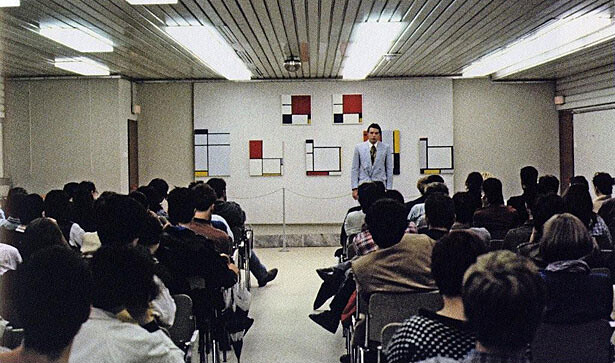

A large part of the (post)Yugoslav neo-avant-garde over the past thirty years has understood the new as the repetition of that which visually already exists. The Belgrade Malevich’s “Last Futurist Exhibition” (Belgrade and Ljubljana, 1986) and “The Armory Show” (Ljubljana, 1986) with its copies of Mondrian, raised questions about the differences between the original and its repetition. The same is true of the first lecture by “Walter Benjamin” (Ljubljana, 1986).6 In this lecture, entitled “Mondrian ’63–’96,” Benjamin speaks of two alleged copies of the same Mondrian painting (signed as Mondrian, but dated 1983) and how they differ from the original:
Even those so-called answers which we’ve arrived at in this lecture are only conditional answers. They are based on assumptions and not on facts. The only true facts are these paintings which stand in front of us. Such simple paintings and such complicated questions. We still don’t know who is the author of these paintings, when they originated and what is their meaning. They rely neither on the co-ordinates of time, nor on co-ordinates of identity, nor on co-ordinates of meaning. They simply hover, and the only comprehensible sense of their existence which we can accept with certainty are these questions themselves.7
Such a statement is not so far from David Hume’s thesis, quoted by Deleuze: “Repetition changes nothing in the object repeated, but does change something in the mind which contemplates it.”[footnoe Gilles Deleuze, Difference and Repetition, trans. Paul Patton (London: Continuum, 2004), 90.] Eastern European art has its own tradition of repetition, and unless we take this tradition into consideration, it will be difficult to understand the current art practices under discussion. For example, the Yugoslav retro-avant-garde has, from the very beginning, always made clear reference to the Russian avant-garde and its utopian revolutionary context.
What I would like to particularly emphasize here are the universal elements in the art of the revolution, which itself had an international character (and which, unfortunately and by contrast, ended in severe isolation). Abstraction in itself was a visual message about this art’s universal nature, and its distinctive shapes—Malevich’s black square and cross, for instance—have been repeated ad infinitum by both the post-utopians and the retro-avant-garde. We might also understand such pure geometric forms as being easily repeatable, which makes them easier to distribute. Regardless of how badly things failed, with the Russian avant-garde we must always remember that these repeatable forms were intended to foster the greater democratization of art by providing a universally accessible formal language.
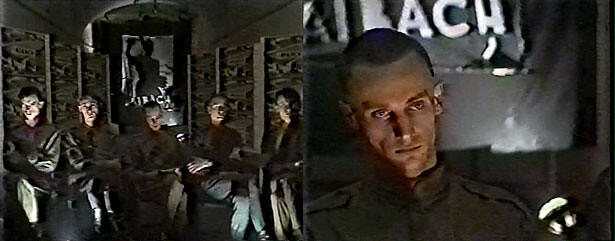

The tradition of socially critical art, then, includes both impersonal forms as well as processes borrowed from real life. Here of course it is necessary to emphasize the reality that is most accessible to the masses: the mass media. One of the retro-avant-garde’s most provocative actions involving the media occurred in 1983, when members of the group Laibach (part of Neue Slowenische Kunst, or NSK) gave an interview to TV Slovenia. Instead of answering the reporter in the usual way, they responded by assuming the roles of particular totalitarian types and reciting their answers in an impersonal, alienated manner, which baffled the public and created a huge scandal. Back then, Laibach’s practice of provocation and alienated consciousness was much riskier than, say, the distribution of alternative content through counterfeits of such media as The New York Times, which the leftist group The Yes Men carried out last year in the United States. This action was recently copied by the anti-globalization German group Attac, who published a counterfeit of the respected Hamburg weekly Die Zeit with content that described the positive results of solutions to the financial crisis, hunger, and the world’s ecological problems. Despite their differences, all these actions are characterized by a repetition that cannot be fully controlled and that includes as an integral part the response of the real.
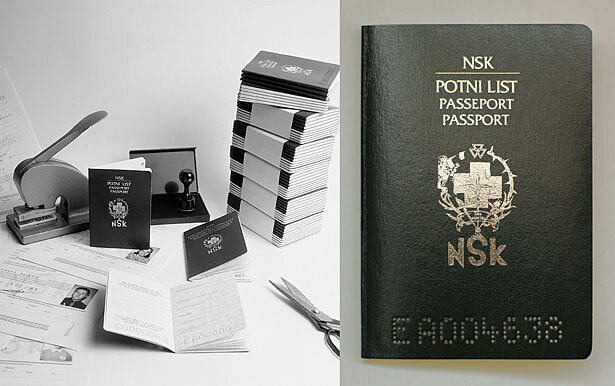

A similar encounter with reality and unpredictability also characterizes several actions by Eastern European artists in recent years. These artists are not so much interested in repeating knowledge about local cultural gestures or memorializing them as they are in reactivating past conflicts and testing their vitality in the present moment. In the early 1990s, the Neue Slowenische Kunst State in Time was founded and soon began issuing its own passports, which were remarkably like genuine passports. In the years since these NSK passports have been requested by many people—mainly, to be sure, art world representatives—who by becoming members of the NSK State became at the same time voluntary participants in an art scenario. At the time NSK began issuing its passports, there were many new states in Europe and war was raging in the Balkans—circumstances that led to increased interest in these artistic copies of official documents, at times out of entirely practical motives. Most of the passports were issued in Sarajevo, largely to members of the art world who used them as an additional ID; many people out of necessity even risked using their NSK passport as a substitute for a real one. A few years ago, NSK’s Internet address began receiving passport requests from people in Nigeria who were interested in the passport solely as a document they could use in a time of crisis. Irwin, one of the groups that make up NSK, documented all these stories and in this way brought them back into the sphere of art. As the Irwin members point out, all these different worlds have today become much closer to each other because of contemporary technologies, especially the Internet, which make access to information possible even in areas that not long ago were quite isolated.
In contrast to NSK, which issued its own passports, the three artists who renamed themselves “Janez Janša,” after the prime minister in Slovenia’s former right-wing government, relinquished their personal documents, including even their bank cards, and displayed them in a gallery for a month; by doing this, they tested—in reality—what life was like without official documents. They demonstrated that forms defined by repeatability are an essential condition of our life and work, and that what is increasingly important is the difference beyond difference: new forms of citizenship that transcend political and formal identity.


Learning from Brecht
Eastern European artists are interested in gestures associated with historical situations that have certain features we see repeated today. The present financial crisis is in many aspects comparable to the one in the 1930s, which precipitated both the rise of the fascist movement and the radicalization of leftist positions. The Croatian curatorial group What, How & for Whom (WHW), which is curating this year’s Istanbul Biennial, has linked the biennial’s concept to the social and political context of the pre–World War II era as treated by Bertolt Brecht in his plays; as WHW points out, this era bears a strong resemblance to the present period of pseudo-morality, fast-growing poverty, and repression. The title of this year’s biennial is borrowed from the song “What Keeps Mankind Alive?” from Brecht’s revolutionary Threepenny Opera (1928). In its concept statement, WHW highlights the fact that Brecht’s play is itself a repetition, or adaptation, of John Gay’s The Beggar’s Opera, from the eighteenth century, the period of early industrial capitalism, which in many ways resembled the time of Brecht’s “opera” (as Brecht himself pointed out: “Just like two hundred years ago we have a social order in which virtually all levels, albeit in a wider variety of ways, pay respect to moral principles not by leading a moral life but by living off morality”).8 This was the play in which Brecht established his concept of “epic” (later, “dialectical”) theater—a theater without illusions, where the actor does not identify with the role but rather simply presents it, while the viewer follows the theatrical event with a critical mind. One of the main principles of Brecht’s theater is the “alienation effect” (Verfremdungseffekt), which performers achieve through songs, commentaries, insertions in dialect and slang, and signs bearing labels, comments, and paraphrases. As the WHW group notes, Brecht used the alienation effect as a means of exposing and deconstructing the workings of the “theatrical apparatus”; similarly, in their repetition of The Beggar’s Opera in Istanbul, they are seeking to avoid the traps of the “contemporary art apparatus.”


Brecht did not combat the prominent ideological slogans by using critical distance, irony, and rational argument; rather, he used these slogans in an even more radical form—essentially repeating them—and thus exposed their meaninglessness. The artists I am discussing have a similar relation to repetition, whether of ideological gestures or of models from the past: they appropriate them in order to make more visible who it is that speaks through them and what message is being conveyed to whom.
Last year the mandate of Slovenia’s right-wing government ended; in its re-evaluation of history, this government had begun to equate WWII collaborationism with the resistance movement and communism with fascism. It is fair to say that this phenomenon is present throughout Eastern Europe, and this is the context in which we must understand the current return to the history of revolutionary art. The Slovene theater director Sebastijan Horvat has staged a number of works in recent years that make direct reference to Brecht’s radical theater. The production that garnered the most attention was Ragged People (Raztrganci), the legendary play written by Matej Bor in 1943 between the battles he participated in as a member of the Slovene Partisan army. Horvat gave this play the Brechtian subtitle Pupils and Teachers (Učenci in učitelji), thus underscoring today’s need for a didactic theater and the importance of communicating with the viewer. At the end of the production, to everyone’s surprise, members of the Partisan Choir in the audience stood up and started singing well-known Partisan songs, which triggered a powerful emotional response among the theatergoers, who showed themselves to strongly relate not only to the Partisan movement but, as one critic has said, to the power and ideology of contemporary theater as well.9 By repeating not only the text but also the form of an ethically and ideologically engaged Partisan play, Horvat (naturally with certain modernizations, stylizations, and emphases) was testing today’s theater public and the possibility of a subversive political theater in a time of capitalist and political pragmatism.
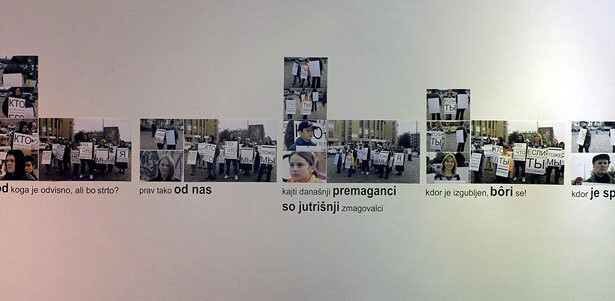

In 2004, the members of a group with the evocative name Chto Delat? (Russian for “What is to be done?”) conducted extensive research in the contemporary urban setting of a working-class neighborhood in Saint Petersburg that had been the focal point of the workers’ uprising of 1905. The objectives of their research were directed toward an analysis of possible forms of resistance against new systems of exploitation and alienation. One of the results was the action “Angry Sandwich-People, or, In Praise of Dialectics,” which was dedicated to the centennial of the first Russian revolution. The action, which they carried out in collaboration with local activist groups, took the form of—as the artists themselves put it—a theater happening in the urban space.10 Participants in the project sought to visualize one of Brecht’s most powerful poems, “In Praise of Dialectics,” the verses of which were displayed on sandwich boards worn by the “protesters.” In their action, the sandwich boards were worn by children, activists, and pensioners, who as a group kept shifting positions and thus changing the arrangement of the signs until, as they themselves have said, the silent mobility of the political potential erupted in resolute poetic speech—in the end the “protesters” recited, in “Soviet” fashion, Brecht’s poem, which resounded with the empty pathos of the revolutionary past. The repetition of this language made it possible to demonstrate that the gestures of the failed revolution had lost all meaning and that the real political potential now resided in the consciousness of this fact.
Brecht also wrote a number of short works known as “didactic pieces” (Lerhstücke), which were primarily intended as lessons for performers. In order for the actors to gain as great a distance as possible from the material they were dealing with, they had to follow Brecht’s rules for performing these “didactic pieces.” Instead of having his actors identify with their roles, what Brecht required, among other things, was the mechanical repetition of certain gestures. The identity of the individual was sacrificed for the sake of broadening the common idea. We could say that today Eastern European artists are once more putting forward art as a “didactic piece”—for artists themselves and for participants. We would probably be entering into dangerous speculation if we started ruminating about why the communist idea was so well received in Eastern Europe and why the spirit of collectivism is so strongly felt in the work of Eastern European artists. Here it is enough to establish certain facts that are necessary for reflecting on repetition. The affinity we see in various Eastern European artists for utopian content, abstract forms, and the ritual nature of repetition are the characteristic features that obscure their exclusive Eastern European identity, and it is here they become universal.
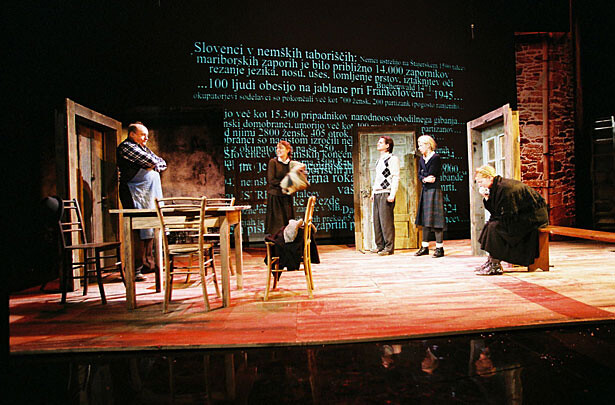

Today we can hardly imagine that something like Russia’s October Revolution, which thoroughly destroyed the tsarist regime in 1917, could ever be repeated. But it is getting easier and easier for us to take part in protests initiated by all sorts of blogs, social networking sites, and so forth. Regardless of how trivial their content might be, in the end we have the feeling that we have done something and have even made a difference. All of this is made possible by the same Internet that is also developing a new economics of culture through the improved distribution of content and the sharing of knowledge. Again we can learn something from Brecht: to demystify the contemporary means of communication, to recognize the repressive power of illusions and, stripping these away, to reveal knowledge—the tool of the cultural revolution. If a revolution lies ahead of us, it will be a cultural revolution that is different from any that has happened before, for it will take full advantage of the educational and informative power of the new technology, as well as the social distress of all the victims of the first global financial crisis.
Though many people proclaim Brecht as the father of postmodern theater due to his demystified illusions and heterogeneous formal methods, it is crucial to underscore here the essential difference between Brecht and postmodernism, a difference that also suggests possible reasons for his renewed relevance today. Where postmodernism relativizes truth, blurs boundaries between the virtual and the real, and injects doubt into clear positions and firm reactions to the social reality, Brecht’s mechanical repetition was a way of constantly encountering the real. In place of Aristotle’s famous catharsis, Brecht employs in his works the alienation effect; in place of taking pleasure in illusion, a stance of constant critical thinking. Only thus does contact with the real become possible; only thus does repetition become possible as the realization of the unpredictable. And it is the unpredictable that enables our creativity and freedom. Or, as Mladen Dolar says, repetition “concerns the core of our being, it is what enslaves us and what brings forth the tiny crack for subject’s freedom.”11 And it is only through constant contact with the real that we are able to rid ourselves of vacillation, take a firm position, and go back to the future.
About this there are many, contradictory theories in circulation. The American urban sociologist Richard Florida writes about a “new creative class” on which the future society of knowledge and creative economy will be based. The Slovenian author Lenart J. Kučić, on the other hand, points out what he refers to as a “minor oversight” on the part of Florida, namely, that a vast majority of creative workers live far below the standards of an elite creative-class lifestyle. Here, Kučić refers to critical sociologists and researchers such as Richard Sennett, Ulrich Beck, and Naomi Klein. The artists and projects I refer to in my text see a certain critical distance and social awareness as inseparably associated with creativity.
Boris Groys, “Back from the Future,” in Arteast 2000+: The Art of Eastern Europe: A Selection of Works for the International and National Collections of Moderna galerija Ljubljana, ed. Zdenka Badovinac and Peter Weibel (Bolzano and Vienna: Folio Verlag, 2001.
Inke Arns, Avantgarda v vzvratnem ogedalu: Sprememba paradigem receprije avant-garde v (nekdanji) Jugoslaviji in Rusiji od 80. let do danes [The avant-garde in the rear-view mirror: Changing the paradigms of the reception of the avant-garde in the (former) Yugoslavia and Russia from the ’80s to today] (Ljubljana: Maska, 2006), 102.
Søren Kierkegaard, “Repetition,” in The Kierkegaard Reader, ed. Jane Chamberlain and Jonathan Rée (Malden, Massachusetts: Blackwell Publishers, 2001), 115.
Boris Groys, “O novem / On the New,” M’Ars: Časopis Moderne galerije (2001): 35.
Walter Benjamin is a well-known philosopher and theoretician of art history and originality and reproduction. Many years after his tragic death he reappeared, in 1986 with the lecture “Mondrian ‘63-‘96,” organized by the Marxist Centre and the ŠKUC Gallery in Ljubljana, and the next year in the “TV Gallery” exhibition in Belgrade. He subsequently published the theses “On Copy” (2003), gave an interview (“My Dear This is Not What it Seems to Be,” 2005), the exhibition “What is Modern Art?” (Kunsthaus Bethanien, Berlin, 2006).
Walter Benjamin, “Mondrian ‘63-‘96” (manuscript of lecture at Cankarjev Dom, Ljubljana, 1986, organized by the ŠKUC Gallery).
Bertolt Brecht, “On the Threepenny Opera,” in The Threepenny Opera, tr. and ed. Ralph Manheim and John Willett (London: Penguin Books, 2008), 92; quoted by WHW in their concept statement, “What Keeps Mankind Alive?.”
Ignacija J. Fridl, “Raztrgani svet in premikanje pogledov,” Dnevnik, October 18, 2007, Pop/Kultura, →.
David Riff and Dimitry Vilensky, “Prekinjene zgodovine / Interrupted Histories,” Arteast Razstava / Arteast Exhibition, Moderna galerija / Museum of Moderna Art, Ljubljana, 2006.
Dolar, “Automatism of Repetition.”
Category
Translated from the Slovene by Rawley Grau.
本文的中文版发表在《当代艺术与投资》第七期上.
